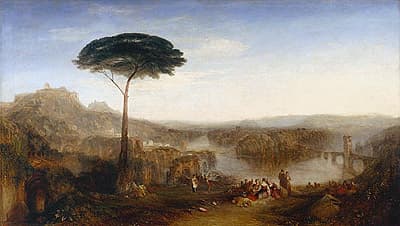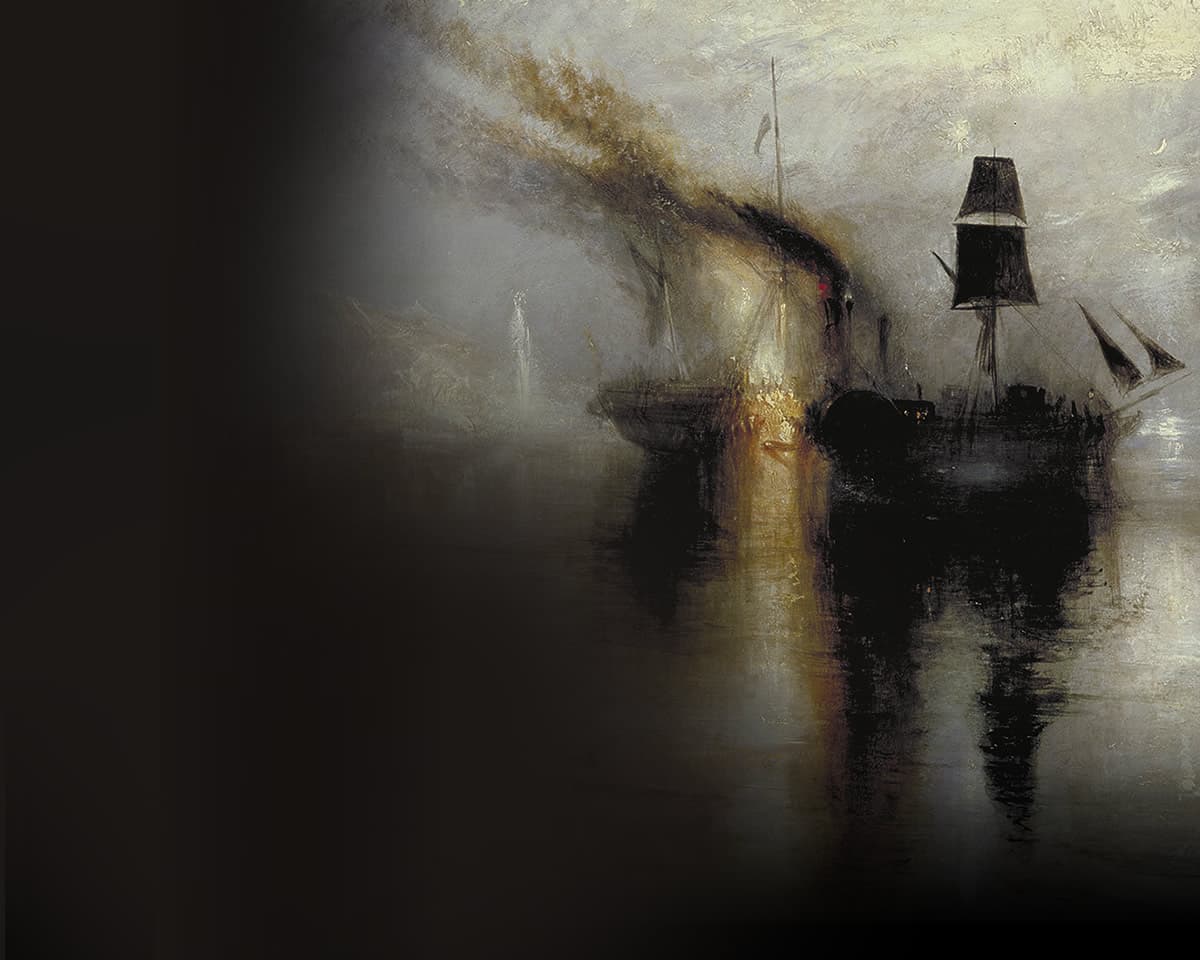
J M W
TURNER
Great Britain
1775
–
1851
142.2 (h) x 248.3 (w) cm Tate Accepted by the nation as part of the Turner Bequest 1856 Photo: © Tate 2013
At the Royal Academy exhibition Turner accompanied his painting with lines from the epic poem by Lord Byron of the same name—‘childe’ being an archaic term for a nobleman’s son. Byron saw the remnants of Italy’s past as profoundly poignant: the country had lost its liberty and integrity but was breathtakingly beautiful. The canvas remained in Turner’s Gallery where John Ruskin described it as once one of the ‘loveliest’ of his paintings but now a ‘mere wreck.’ The vase, a detail in the left foreground, was originally stuck on as a piece of paper.
At the Royal Academy exhibition Turner accompanied his painting with lines from the epic poem by Lord Byron of the same name—‘childe’ being an archaic term for a nobleman’s son. Byron saw the remnants of Italy’s past as profoundly poignant: the country had lost its liberty and integrity but was breathtakingly beautiful. The canvas remained in Turner’s Gallery where John Ruskin described it as once one of the ‘loveliest’ of his paintings but now a ‘mere wreck.’ The vase, a detail in the left foreground, was originally stuck on as a piece of paper.
At the Royal Academy exhibition Turner accompanied his painting with lines from the epic poem by Lord Byron of the same name—‘childe’ being an archaic term for a nobleman’s son. Byron saw the remnants of Italy’s past as profoundly poignant: the country had lost its liberty and integrity but was breathtakingly beautiful. The canvas remained in Turner’s Gallery where John Ruskin described it as once one of the ‘loveliest’ of his paintings but now a ‘mere wreck.’ The vase, a detail in the left foreground, was originally stuck on as a piece of paper.

